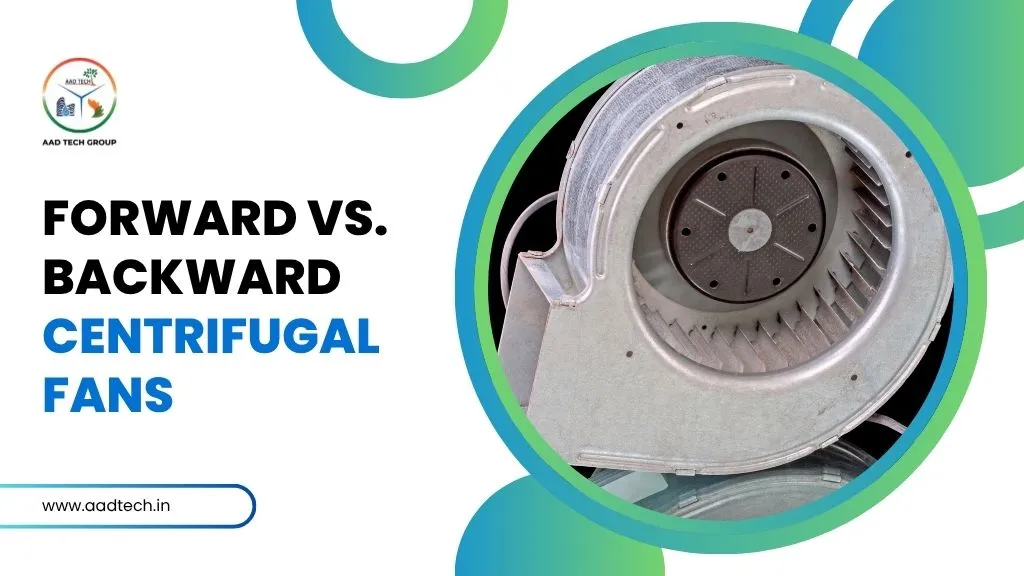Centrifugal fans are a central part of modern HVAC and industrial ventilation systems and are tasked with the efficient movement of air through enclosures and ducts. Centrifugal fans exist in two basic configurations backward curved and forward curved. Both serve the function of air movement, yet both look, operate, and are used differently. Understanding the key differences between the two can help in selecting the right fan type for your system, and companies like Aad Tech are leading the way in offering tailored fan solutions for diverse industrial needs.
What Are Centrifugal Fans?
Centrifugal fans employ the centrifugal force principle to blow air away from the fan wheel center. When the fan is rotating, air is pulled into the center and blown radially out by the blades. The shape of the blade will dictate how effectively this air is transferred and in which kind of application the fan will be most appropriate.
Forward Curved Centrifugal Fans
Forward curved fans have blades that are curved in the same direction as the fan’s rotation. Such blades are usually many and closely spaced, making the fan have a compact shape.
Key Characteristics:
- High airflow at low static pressure: They are suitable when a large amount of air is required at relatively low pressure. Commonly used in domestic air conditioning, short duct systems, and fan coil units.
- Compact and quiet operation: Owing to the close blade pattern, forward curved fans operate quietly and are utilized frequently in noise-sensitive applications.
- Sensitive to system resistance: Efficiency is greatly reduced if the system pressure fluctuates, and thus they are less suitable for varying conditions.
- Applications: Domestic HVAC systems, air curtains, kitchen hoods, and low-pressure ventilation systems.
Backward Curved Centrifugal Fans
In comparison, backward curved fans’ blades curve away from the direction of rotation. They have fewer and more widely spaced blades, and higher speed with higher efficiency.
Key Characteristics:
- High static pressure and efficiency: Backward curved fans are more efficient in transferring energy to air, and they can manage systems with high resistance.
- Strong and long-lasting: With lesser probability of dust deposition and better construction, they are appropriate for industrial applications and polluted air conditions.
- Reliable performance: These fans deliver consistent performance even when running at different pressure levels.
- Applications: Industrial ventilation, HVAC systems of commercial buildings, clean rooms, and air-handling units of manufacturing facilities.
Comparison of Performance and Energy Efficiency
Among the several considerations of selection between these two types of fans is energy usage. Backward curved fans are generally more efficient, and efficiency delivers lower operating costs. This makes them more ideal for applications where the fan operates continuously or under severe conditions.
Forward curved fans, while less efficient, are cheaper and adequate for low-pressure, simple requirements systems. They will cost more energy in the long run if employed in the wrong high-resistance systems.
Noise Levels
Acoustically, forward curved fans tend to be less noisy at low speed and are well suited to dwelling or office applications. Backward curved fans may be noisier but can be kept quiet when properly designed and utilized with noise-minimizing accessories like sound attenuators or vibration isolators.
Aad Tech’s Expertise in Fan Solutions
Aad Tech is an expert in high-performance air movement systems and designs both forward and backward centrifugal fans to suit various industrial and commercial uses. Their product ranges are precision-engineered for maximum airflow, energy efficiency, and compliance with contemporary HVAC standards.
Having an in-depth knowledge of fan aerodynamics, Aad Tech delivers customers performance-optimized solutions for a textile unit, clean room, pharmaceutical plant, or a commercial HVAC retrofit.
Selecting the Proper Fan for Your Application
Forward or backward curved centrifugal fans should be selected based on:
- Needed airflow and static pressure
- Working conditions (clean or dirty)
- Noise restrictions
- Energy efficiency requirements
- System design and cost limitations
Forward curved fans are an economical solution for low-pressure, sound-sensitive areas, but backward curved fans provide long-term value in high-performance usage because of their long life and efficiency.
Conclusion
Knowledge of the operational differences between forward and backward centrifugal fans can make a big difference in the efficiency and performance of your HVAC or ventilation system. As an HVAC contractor or a manager of an industrial facility, selecting the right type of fan is paramount to operational success.
With the experience of organizations such as Aad Tech, the selection of the ideal fan solution is made easy with the backing of industry expertise and technological advancements.

